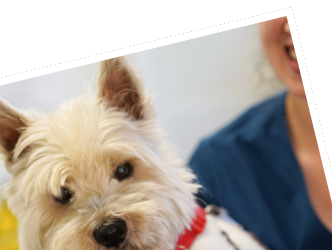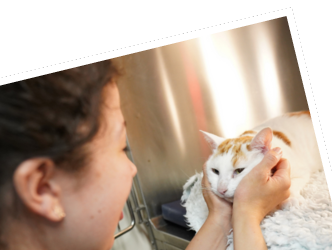
Vet Sarah Aldridge answers FAQs on ticks and the health threat to dogs and humans
April 7, 2024
It’s that time of year again, when spring sunshine and warmer temperatures mean ticks become more of a problem. Whether you’re out and about in Northamptonshire or taking your dog on trips further afield, now is the time to be vigilant. Take a look at our article below in which Vet Sarah Aldridge, answers some commonly asked questions about ticks and the danger they pose to dogs and humans.
Guide to removing a tick safely
Daventry Veterinary Clinic’s Tick FAQs
What are ticks?
Ticks are tiny arachnids that feed on the blood of mammals, including our beloved canine companions. While they may be small in size, ticks can pose significant health risks to dogs and their owners.
Why are ticks on dogs such a problem?
Daventry Veterinary Clinic’s Veterinary Surgeon Sarah Aldridge, explains that ticks are more than just a nuisance – they can vectors for a variety of diseases that can affect both dogs and humans. When a tick attaches to a dog and feeds on their blood, it can transmit pathogens such as bacteria, viruses, protozoa and parasites. Generally the longer the tick is attached to a dog the higher the risk of transmission of diseases the tick may be carrying. Some of the most common diseases ticks carry in the UK are Lyme diseased more recently Babesiosis and Anaplasma. Dogs travelling abroad may also be at risk of contracting Ehrlichiosis from ticks, a bacterial infection that may cause bleeding problems.
Sarah shares that ticks are also highly adaptable creatures, capable of thriving in a wide range of environments, from wooded areas to urban parks. This makes it challenging to avoid exposure to ticks, especially for dogs who enjoy spending time outdoors. Ticks attach to other mammals during their life cycle and are especially prevalent in areas with deer. Additionally, ticks can be difficult to detect, as although they can attach anywhere on the body they often attach themselves to thin skinned areas of the dog’s body that are hard to see, such as between the toes, inside the ears, in the groin or under the tail. They can also be more difficult to spot in dogs with long or dense coats.
What are the health implications of tick infestations?
Sarah wants Northamptonshire dog owners to be aware that tick infestations can have serious health implications for dogs. In addition to transmitting diseases, ticks can cause local irritation and inflammation at the site of attachment. Some dogs may develop allergic reactions to tick saliva, leading to symptoms such as itching, redness, and swelling.
If left untreated, tick-borne diseases can cause a range of symptoms in dogs, including fever, lethargy, lameness, joint pain, and organ damage. In severe cases, untreated tick-borne diseases can be fatal. Moreover, certain tick-borne pathogens, such as those that cause Lyme disease, can also affect humans, posing a risk to pet owners and their families.
Can you prevent dogs getting ticks?
Fortunately, there are several steps you can take to protect your dog from ticks and the diseases they carry:
- Use tick preventatives: Our vets can advise you about the best tick prevention products for your dog’s individual needs depending on their lifestyle. There are many safe and effective options available, including oral medications, topical treatments, tick collars. It’s important for a product to kill ticks quickly to decrease the chance of disease transmission. Other factors to consider are bathing can wash out some topical treatments and it is generally not advised that dogs with tick collars sleep on their owners beds or have lots of close contact with children.
- Perform regular tick checks: After spending time outdoors, it is wise to thoroughly check your dog for ticks, paying close attention to areas where ticks are likely to hide such as between the toes, inside the ears, in the groin or under the tail. If you find a tick, it’s essential to remove it promptly and safely to reduce the risk of disease transmission – download our guide on removing a tick safely here.
- Avoid tick-infested areas: When possible, avoid or limit access to areas of known high
tick density or at times of the year when ticks are known to be most active.
Download our guide on removing a tick safely
If you find a tick on your dog, it’s crucial to remove it properly to minimise the risk of infection. Download our guide on removing a tick safely for step-by-step instructions and helpful tips. With our guide, you’ll have the knowledge and confidence to handle tick removal quickly and effectively, helping to protect your dog’s health and wellbeing. We’re here to help if you have any difficulties with this – call us on 01327 877767.
Get our guide to removing a tick safely
By taking proactive measures to prevent tick infestations and promptly remove any ticks that may attach to your dog, you can help keep your furry friend safe from the dangers of tick-borne diseases. If you have any concerns about ticks or tick prevention, don’t hesitate to get in touch with our helpful team at Daventry Vets.



